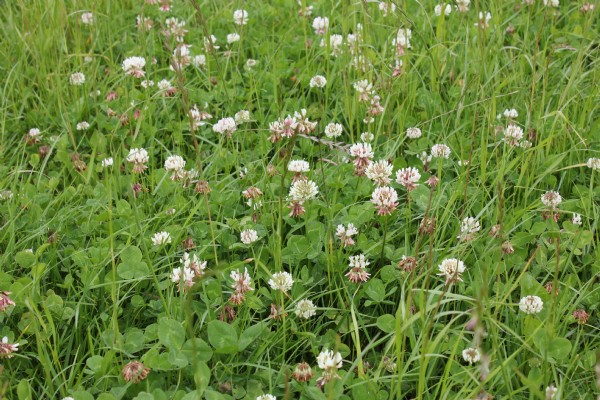

Nitrogen, in the form of nitrate, is the most important nutrient for high yields grass. To ensure its effectiveness levels of other key elements - phosphate, potash and calcium - must be correct and sufficient rainfall is essential to ensure N uptake. The best time to apply N to grass is just as its starts rapid growth in spring. So, February or March depending on whether you're in the north or south.
Typically, 2 or 3 cwts/acre are applied in the form of ammonium nitrate at 34% N (which equates to 85-130 kg per hectare) for the first cut. Urea, a cheaper alternative is a popular choice.
Applying further N during the season will boost subsequent yields. A total quantity of 200 kg N per hectare per season is normal for ryegrass-only swards, with 60% of this allowance applied in early spring and the remainder applied after first cut, provided there is sufficient soil moisture. N applications should cease by mid August as late applications may cause environmental damage as it is unlikely to be taken up by the grass as soil is likely to be dry and growth has slowed down.
However, as N prices have risen so sharply in recent years many farmers are looking to alternative, cheaper methods of boosting yields. One excellent alternative is to mix clovers in with grasses as clover will fix atmospheric N making the ley self-sufficient.
We are often asked whether N should be applied to leys containing clover. In this case, there is a risk is that the N will favour the grass and suppress the clover making its inclusion a waste of time. However, it is possible to apply early spring N fertiliser at no more than one third of the above rate (ie 28 kg/ha) without dramatically changing the sward composition. When N is applied tactically like this in late February it can lead to the doubling of grass growth.
If too much N is applied however, or it applied too late, then it will suppress the proportion of clover in the sward. To make a ley self-sufficient in N white or red clover should be at around 30 - 50% in the sward. Visually this can look like a lot, especially towards the latter part of the growing season, but at this level more than 200 kg N/ha can be fixed.
Other forage crops have slightly lower N requirements than grass swards with forage rape, kale, rape/kale hybrids and turnips needing 70-100 kg N/ha and maize 150 kg N/ha.
Date Posted: 27th February 2012




